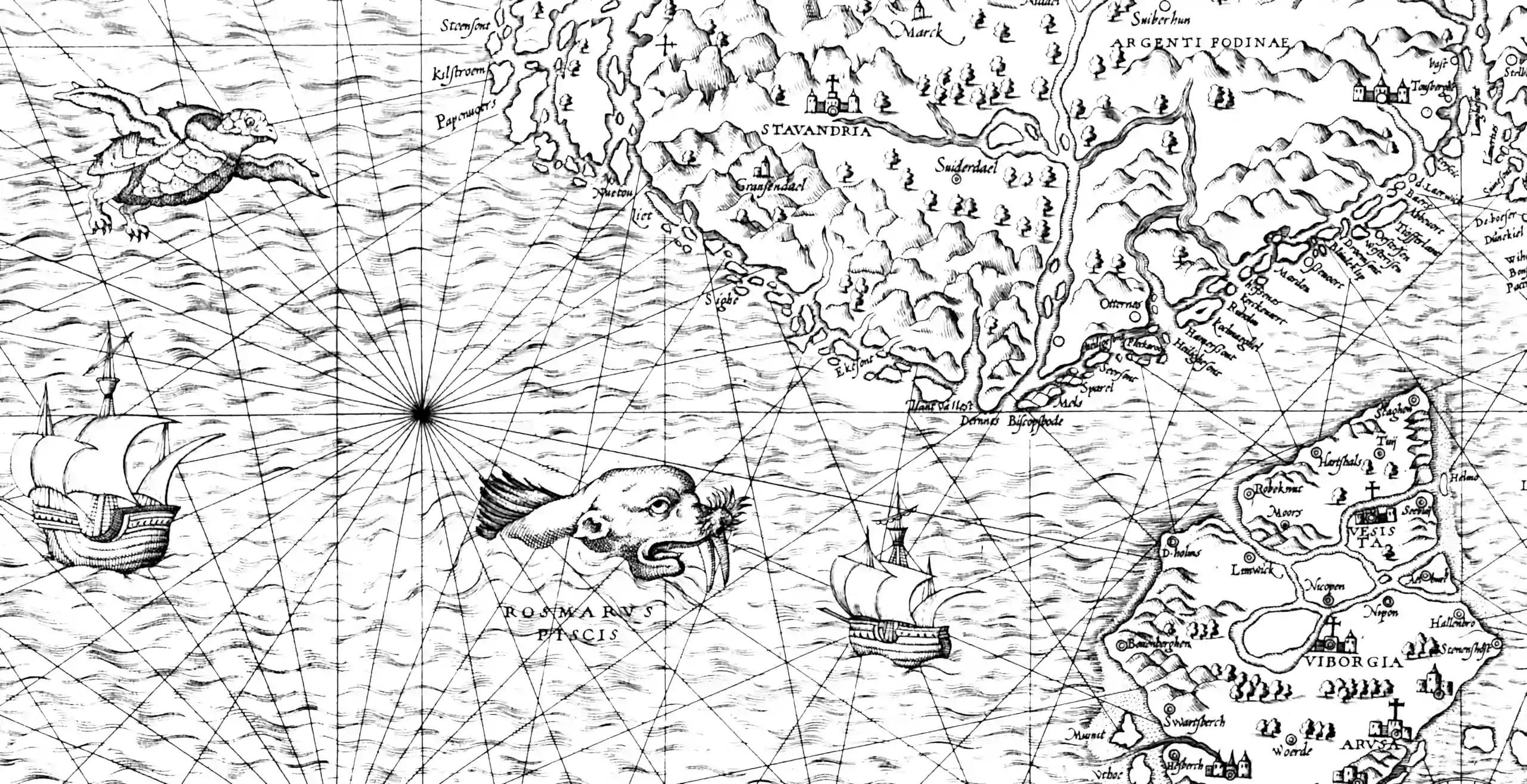Neural learning for spatiotemporal systems
September 15, 2020 — November 13, 2024
dynamical systems
machine learning
neural nets
sciml
SDEs
signal processing
spatial
statistics
stochastic processes
time series
Suspiciously similar content
On regression from 2D images to 2D images (sometimes 3D is OK) using neural networks. Useful in learning stochastic partial differential equations and other processes, which use the tools of dynamical NNs and their ilk. Probably handy for machine learning physics and especially PDEs.
In the inverse setting, useful tools might include low rank or lattice Gaussian processes.
I know little about this topic yet. But here are some articles to read.
1 U-Net
A convnet architecture designed for image segmentation but useful in general image->image regression (Ronneberger, Fischer, and Brox 2015; Shelhamer, Long, and Darrell 2017).
2 Operator learning
See ML for PDEs.
3 Geospatial scale
4 Foundation models for
5 References
Arridge, Maass, Öktem, et al. 2019. “Solving Inverse Problems Using Data-Driven Models.” Acta Numerica.
Ayed, and de Bézenac. 2019. “Learning Dynamical Systems from Partial Observations.” In Advances In Neural Information Processing Systems.
Beck, E, and Jentzen. 2019. “Machine Learning Approximation Algorithms for High-Dimensional Fully Nonlinear Partial Differential Equations and Second-Order Backward Stochastic Differential Equations.” Journal of Nonlinear Science.
Dupont, Kim, Eslami, et al. 2022. “From Data to Functa: Your Data Point Is a Function and You Can Treat It Like One.” In Proceedings of the 39th International Conference on Machine Learning.
E, Han, and Jentzen. 2017. “Deep Learning-Based Numerical Methods for High-Dimensional Parabolic Partial Differential Equations and Backward Stochastic Differential Equations.” Communications in Mathematics and Statistics.
E, and Yu. 2018. “The Deep Ritz Method: A Deep Learning-Based Numerical Algorithm for Solving Variational Problems.” Communications in Mathematics and Statistics.
Guth, Mojahed, and Sapsis. 2023. “Evaluation of Machine Learning Architectures on the Quantification Of Epistemic and Aleatoric Uncertainties In Complex Dynamical Systems.” SSRN Scholarly Paper.
Han, Jentzen, and E. 2018. “Solving High-Dimensional Partial Differential Equations Using Deep Learning.” Proceedings of the National Academy of Sciences.
He, Barajas-Solano, Tartakovsky, et al. 2020. “Physics-Informed Neural Networks for Multiphysics Data Assimilation with Application to Subsurface Transport.” Advances in Water Resources.
Ikeda. 1989. “Decentralized Control of Large Scale Systems.” In Three Decades of Mathematical System Theory: A Collection of Surveys at the Occasion of the 50th Birthday of Jan C. Willems. Lecture Notes in Control and Information Sciences.
Laloy, and Jacques. 2019. “Emulation of CPU-Demanding Reactive Transport Models: A Comparison of Gaussian Processes, Polynomial Chaos Expansion, and Deep Neural Networks.” Computational Geosciences.
Lu, Meng, Mao, et al. 2021. “DeepXDE: A Deep Learning Library for Solving Differential Equations.” SIAM Review.
Mahesh, Collins, Bonev, et al. 2024. “Huge Ensembles Part I: Design of Ensemble Weather Forecasts Using Spherical Fourier Neural Operators.”
Mo, Zabaras, Shi, et al. 2019. “Deep Autoregressive Neural Networks for High-Dimensional Inverse Problems in Groundwater Contaminant Source Identification.” Water Resources Research.
Müller, and Zeinhofer. 2020. “Deep Ritz Revisited.”
Nabian, and Meidani. 2019. “A Deep Learning Solution Approach for High-Dimensional Random Differential Equations.” Probabilistic Engineering Mechanics.
Park, Yoo, and Nadiga. 2019. “Machine Learning Climate Variability.” In.
Patraucean, Handa, and Cipolla. 2015. “Spatio-Temporal Video Autoencoder with Differentiable Memory.” arXiv:1511.06309 [Cs].
Pirinen, Mogren, and Västerdal. 2023. “Fully Convolutional Networks for Dense Water Flow Intensity Prediction in Swedish Catchment Areas.”
Rackauckas, Edelman, Fischer, et al. 2020. “Generalized Physics-Informed Learning Through Language-Wide Differentiable Programming.” MIT Web Domain.
Raissi, Perdikaris, and Karniadakis. 2019. “Physics-Informed Neural Networks: A Deep Learning Framework for Solving Forward and Inverse Problems Involving Nonlinear Partial Differential Equations.” Journal of Computational Physics.
Raissi, Yazdani, and Karniadakis. 2020. “Hidden Fluid Mechanics: Learning Velocity and Pressure Fields from Flow Visualizations.” Science.
Razavi. 2021. “Deep Learning, Explained: Fundamentals, Explainability, and Bridgeability to Process-Based Modelling.” Environmental Modelling & Software.
Ronneberger, Fischer, and Brox. 2015. “U-Net: Convolutional Networks for Biomedical Image Segmentation.” Edited by Nassir Navab, Joachim Hornegger, William M. Wells, and Alejandro F. Frangi. Medical Image Computing and Computer-Assisted Intervention – MICCAI 2015. Lecture Notes in Computer Science.
Ruthotto, and Haber. 2020. “Deep Neural Networks Motivated by Partial Differential Equations.” Journal of Mathematical Imaging and Vision.
Safonova, Ghazaryan, Stiller, et al. 2023. “Ten Deep Learning Techniques to Address Small Data Problems with Remote Sensing.” International Journal of Applied Earth Observation and Geoinformation.
Särkkä. 2011. “Linear Operators and Stochastic Partial Differential Equations in Gaussian Process Regression.” In Artificial Neural Networks and Machine Learning – ICANN 2011. Lecture Notes in Computer Science.
Särkkä, and Hartikainen. 2012. “Infinite-Dimensional Kalman Filtering Approach to Spatio-Temporal Gaussian Process Regression.” In Artificial Intelligence and Statistics.
Särkkä, Solin, and Hartikainen. 2013. “Spatiotemporal Learning via Infinite-Dimensional Bayesian Filtering and Smoothing: A Look at Gaussian Process Regression Through Kalman Filtering.” IEEE Signal Processing Magazine.
Shankar, Portwood, Mohan, et al. 2020. “Learning Non-Linear Spatio-Temporal Dynamics with Convolutional Neural ODEs.” In Third Workshop on Machine Learning and the Physical Sciences (NeurIPS 2020).
Shelhamer, Long, and Darrell. 2017. “Fully Convolutional Networks for Semantic Segmentation.” IEEE Transactions on Pattern Analysis and Machine Intelligence.
Solin, and Särkkä. 2013. “Infinite-Dimensional Bayesian Filtering for Detection of Quasiperiodic Phenomena in Spatiotemporal Data.” Physical Review E.
Stewart, Robinson, Corley, et al. 2022. “TorchGeo: Deep Learning with Geospatial Data.” In Proceedings of the 30th International Conference on Advances in Geographic Information Systems. Sigspatial ’22.
Tait, and Damoulas. 2020. “Variational Autoencoding of PDE Inverse Problems.” arXiv:2006.15641 [Cs, Stat].
Tartakovsky, Marrero, Perdikaris, et al. 2018. “Learning Parameters and Constitutive Relationships with Physics Informed Deep Neural Networks.”
Yang, Zhang, and Karniadakis. 2020. “Physics-Informed Generative Adversarial Networks for Stochastic Differential Equations.” SIAM Journal on Scientific Computing.
Zammit-Mangion, Ng, Vu, et al. 2021. “Deep Compositional Spatial Models.” Journal of the American Statistical Association.
Zammit-Mangion, and Wikle. 2020. “Deep Integro-Difference Equation Models for Spatio-Temporal Forecasting.” Spatial Statistics.
Zang, Bao, Ye, et al. 2020. “Weak Adversarial Networks for High-Dimensional Partial Differential Equations.” Journal of Computational Physics.
Zhang, Guo, and Karniadakis. 2020. “Learning in Modal Space: Solving Time-Dependent Stochastic PDEs Using Physics-Informed Neural Networks.” SIAM Journal on Scientific Computing.
Zhang, Lu, Guo, et al. 2019. “Quantifying Total Uncertainty in Physics-Informed Neural Networks for Solving Forward and Inverse Stochastic Problems.” Journal of Computational Physics.
